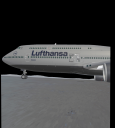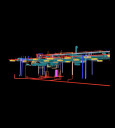makeSEA News
Community Projects
 Boeing 747 Airplane
Boeing 747 Airplane

I made this.
 0 ajhartley CaptureAndTurbine 050720
0 ajhartley CaptureAndTurbine 050720
Project contains glb assets to test catapult
 Test
Test

Click here to edit your project summary. You can include inline images if you prefer.
 Venues and Events
Venues and Events
Testing event and venue video captures and optimization methods for best quality/performance across various XR devices.
 Box Club Store (misc. digital twin scans)
Box Club Store (misc. digital twin scans)

Scans from a local box store.
 279rehab
279rehab

Following damage received during Hurricane Irma, 279 E Pine becomes more resilient and a living, breathing example
 A day in the life of my fish
A day in the life of my fish
Click here to edit your project summary. You can include inline images if you prefer.
 MC Infrastructure
MC Infrastructure

I made this.
 Quatang
Quatang

Click here to edit your project summary. You can include inline images if you prefer.
 test-ms
test-ms

Click here to edit your project summary. You can include inline images if you prefer.
— 10 Items per Page
Pictures and video don't convert like first-hand experience does.
Research shows that using augmented (AR), and virtual reality (VR), is more compelling and more likely to persuade your audience to buy, learn, and understand what you have to share. Use makeSEA to deliver content that connects with your audience like no other medium can.
Compel your audience with
Content Management and Cross-Platform Collaboration
for Augmented and Virtual Reality
The fastest way to organize and share your content as if you are together with your audience in real life and keep it fresh using next-generation virtual and augmented reality technology.
It's time to change the way you communicate, collaborate and compel your audience.
Time to change the way you capture and curate evolving ideas.
Use makeSEA content management platform + Catapult, our cross-platform client app for mixed reality and spatial collaboration to share your vision and inspire your audience with content that you are already producing.
10X-100X Time Savings • Recyclable Content & Scenes
Use makeSEA to reduce your AR and VR production time by an order of magnitude, or two.
Blend content from multiple sources tell a better story: 3D models, real-world scans, video, and you!
Keep things fresh and relevant and improve experiences over time as your content and XR technology mature.
Enabling augmented reality, mixed reality and spatial computing for everyday use.SM
Catapult your vision, in real-time together, for FREE.
It's as easy as a social media post:
-
Create an account, start a project and upload your content from most any content source1.
-
Launch Catapult, makeSEA's mixed reality client app on your VR or AR compatible device2.
-
Share and collaborate using your own spatial content, with others together in real-time, in the same physical space and remotely.
Click Here to Get Detailed Instructions, Download and Install
Try makeSEA now! Simply register here and start publishing.
makeSEA is also available as a privately branded (white-label), or custom integrated solution for enterprise. Please Contact Us for more information.
for Architecture
& Design
& Design
Magic Leap &
AR/Mixed Reality
Content Publishing
AR/Mixed Reality
Content Publishing
for Education
& Making
& Making
for Construction
for Trade Shows
& Exhibits
& Exhibits
for Retail
& Branding
& Branding
1:Catapult supports assets saved in GLB (preferred), FBX, OBJ, STL or MP4 (standard 720p, 1080p, or 3K 360˚ spherical surround format), or a makeScene package for live over-the-air collaboration with shared spatial content. See the how-to guide for hints and instructions on how to easily export or convert content from most 3D authoring tools and platforms. 2:makeSEA supports Oculus Quest 2, Magic Leap 1, and Microsoft Hololens 2, makeSEA for Enterprise supports additional client devices; contact us for more information.
 Welcome to MakeSEA
Welcome to MakeSEA
Welcome to MakeSEA
 What Green 3D Projects would you like to see at makeSEA?
What Green 3D Projects would you like to see at makeSEA?
What green 3D projects would you like to see at makeSEA?
 What do you use for 3D Print Object Digital Rights Management today?
What do you use for 3D Print Object Digital Rights Management today?
What do you use for 3D Print Object Digital Rights Management today?
 using the 660w motor on a bike
using the 660w motor on a bike
Hello everybody, can we use the 660w printed motor or other printed motor on a bike...
 RE: using the 660w motor on a bike
RE: using the 660w motor on a bike
Hi Virgil, Thanks for posting. The short answer is "Yes!", that is a perfect...
 RE: using the 660w motor on a bike
RE: using the 660w motor on a bike
Thanks for your answer, i just bought a creality cr10s. I will definitely start a project...
 Engine 600 is effective
Engine 600 is effective
I'm not sure, so ask people, what is the evaluation of the 600 engine
 3D Halbach Array Brushless DC Motor.
3D Halbach Array Brushless DC Motor.
Hello, I cannot access the drawings of the 3D Halbach array brushless dc motor. Why is that? can...



